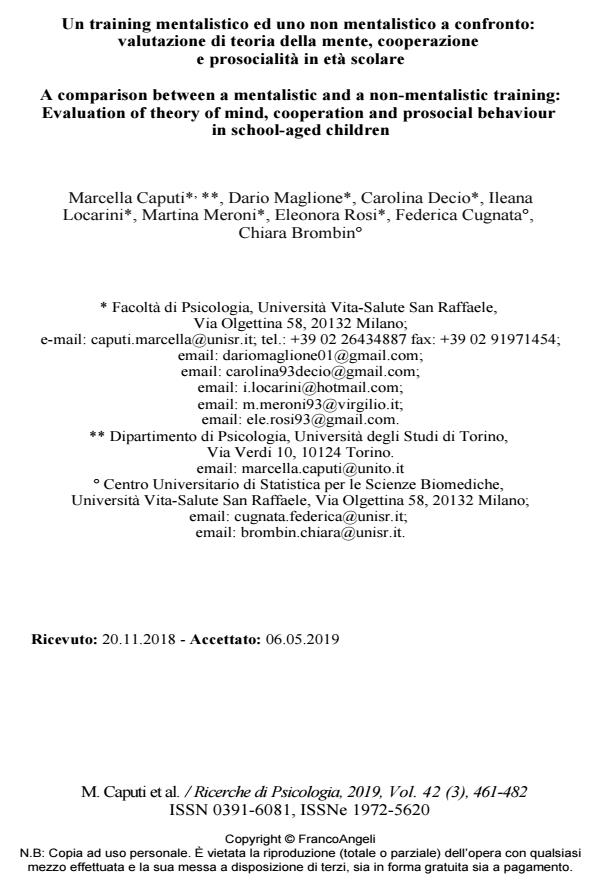Un training mentalistico ed uno non mentalistico a confronto: valutazione di teoria della mente, cooperazione e prosocialità in età scolare
Titolo Rivista RICERCHE DI PSICOLOGIA
Autori/Curatori Marcella Caputi, Dario Maglione, Carolina Decio, Ileana Locarini, Martina Meroni, Eleonora Rosi, Federica Cugnata, Chiara Brombin
Anno di pubblicazione 2019 Fascicolo 2019/3
Lingua Italiano Numero pagine 22 P. 461-482 Dimensione file 219 KB
DOI 10.3280/RIP2019-003002
Il DOI è il codice a barre della proprietà intellettuale: per saperne di più
clicca qui
Qui sotto puoi vedere in anteprima la prima pagina di questo articolo.
Se questo articolo ti interessa, lo puoi acquistare (e scaricare in formato pdf) seguendo le facili indicazioni per acquistare il download credit. Acquista Download Credits per scaricare questo Articolo in formato PDF

FrancoAngeli è membro della Publishers International Linking Association, Inc (PILA)associazione indipendente e non profit per facilitare (attraverso i servizi tecnologici implementati da CrossRef.org) l’accesso degli studiosi ai contenuti digitali nelle pubblicazioni professionali e scientifiche
Nel presente lavoro, condotto su bambini di 9-10 anni, ci si è proposti di valutare gli effetti di due training - uno mentalistico e uno non mentalistico - sulla teoria della mente, sulla cooperazione e sulla prosocialità. I due training sono stati messi a confronto, randomizzando il campione in due gruppi composti ciascuno da 105 bambini. La teoria della mente è migliorata maggiormente nel gruppo assegnato alla condizione di training mentalistico, i livelli di cooperazione e prosocialità sono aumentati in entrambi i gruppi e la teoria della mente è risultata un predittore significativo della cooperazione ma non della prosocialità.
Parole chiave:Teoria della mente, training, media infanzia, cooperazione, comportamento prosociale
Marcella Caputi, Dario Maglione, Carolina Decio, Ileana Locarini, Martina Meroni, Eleonora Rosi, Federica Cugnata, Chiara Brombin, Un training mentalistico ed uno non mentalistico a confronto: valutazione di teoria della mente, cooperazione e prosocialità in età scolare in "RICERCHE DI PSICOLOGIA " 3/2019, pp 461-482, DOI: 10.3280/RIP2019-003002